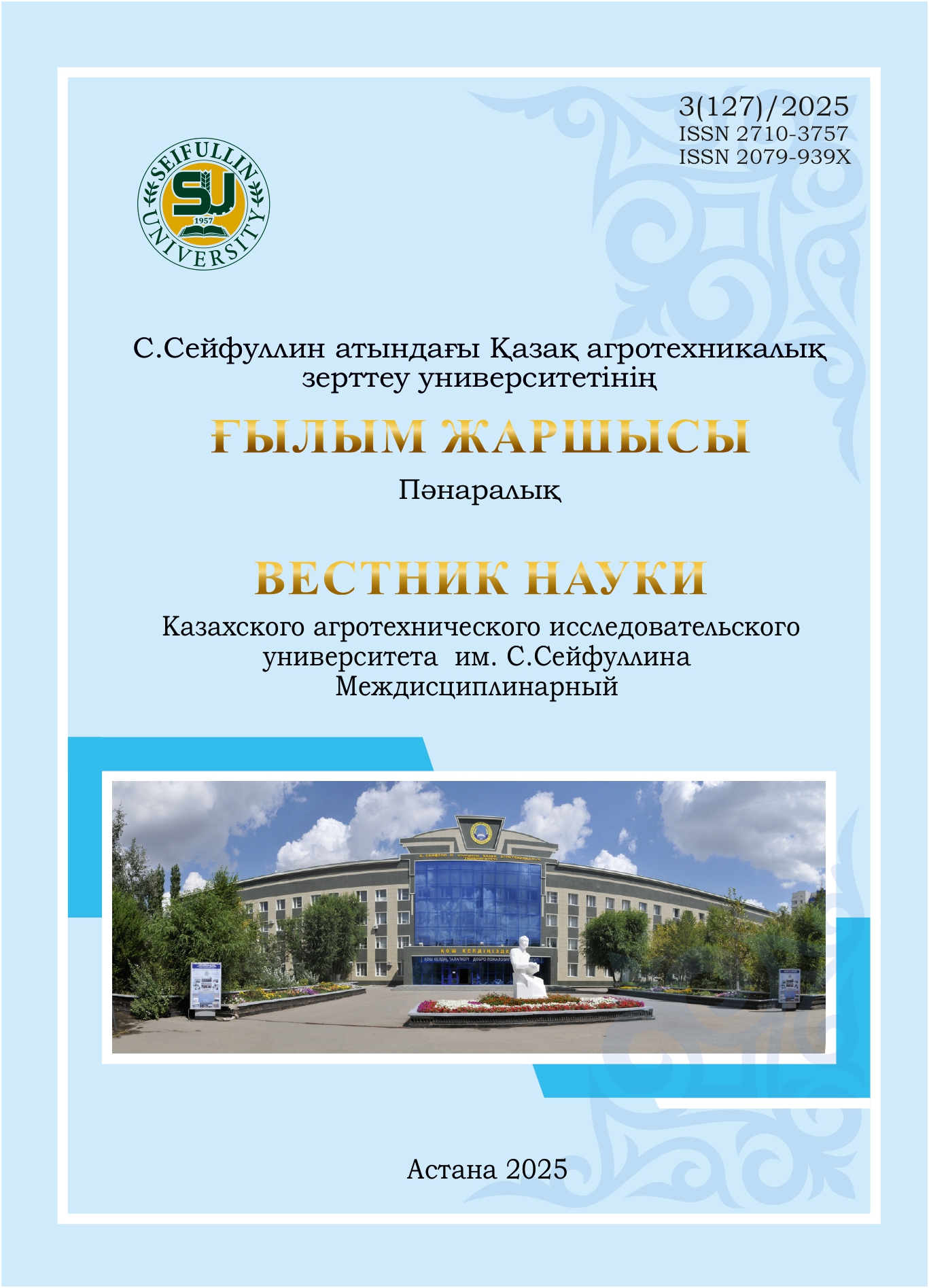Study of resistance of pea to lodging
DOI:
https://doi.org/10.51452/kazatu.2025.3(127).1992Keywords:
peas; lodging; resistance; selection; whiskered (leafless) morphotype; yield.Abstract
There is a growing interest in Kazakhstan in developing advanced pea varieties characterized by uniform maturity, high yield and lodging resistance. Lodging resistance is a crucial selecting criterion, as peas are inherently susceptible due to the initially weak stem base. Genetic variability in stem strength is limited, resulting in slow progress in this area of selection. However, some advancements have been made in improving lodging resistance in new pea lines. Most of the growers favor determinate semi-leafless varieties with short stems. Under typical weather conditions these peas remain upright during harvest, enabling faster harvesting, minimal equipment modification, and improved seed quality. Indeterminate varieties, while exhibiting better weed competition, and more stable yields under heat stress, tend to lodge severely at harvest, necessitating specialized cleaning procedures. The Pisum sativum L. gene pool encompasses diverse morphological forms, primarilyleafy and stipulate morphotypes. Leafless morphotypes are widely cultivated due to their improved standability. However, the reduction in leaf surface area can have undesirable consequences. This article presents, a review of scientific literary from the past 20 years, systematically examining current research data, including experimental evidence, on methods for enhancing pea yield. One of the most effective strategies is the development and introduction of new high-yielding, technologically advanced varieties.

